En Route to Rouen

August 1944: after months of hard fighting, the Allies are finally out of Normandy. In front of them, the Wehrmacht has all but disintegrated, having stood its ground up until the breaking point. Supply is now the biggest concern for the Allies. Taking the large port of Antwerp will allow them to freely operate their vast armies and air forces in months to come.
Now that the game has been officially announced, I’ve decided to change the post format for this diary a little. Previously, I focused heavily on what we were doing internally. I was giving a lot of technical info, and even airing our own doubts if the project was going to get completed at all. Big thanks to all who’ve had the patience to bear with these “developer confessions”. The new format should be much more player oriented. We will be going through concrete examples of play, the historical context, and how the game mechanics tie everything together. I hope you enjoy it!
If you’ve been reading our previous developer diaries, you’re likely already familiar with some of the key new features in Unity of Command II, like fog of war, HQ intel, and stragglers. Today we’ll show how these new features tie together to form a tight little gameplay loop, that gives an entirely new dimension to the game.
The Route Ahead
In the screenshot, US 1st Army is in position on the left bank of the Seine estuary, and is looking to jump across the river at Rouen. En route to Rouen however, they need to deal with German forces stationed around the town of Évreux.

Check out the blue dots just north of Évreux: center of the map, right behind that panzer IV. Those are stragglers: routed enemy elements trying to make their way back to their HQ. We’ve talked about the idea of stragglers in our very first dev diary. The blue icon shows their approximate strength in steps, and the orange symbol on the 3-step straggler is important – but read on.
A Peek into FoW
Usually, you want to capture enemy stragglers anyway, before the enemy gets to reorganize them and use as reinforcements. There’s an added bonus though: prisoners provide valuable intel to your HQ. After you capture a set number of stragglers (in one turn) they reveal locations of enemy units hidden within Fog of War. Let’s take a look at how that works.
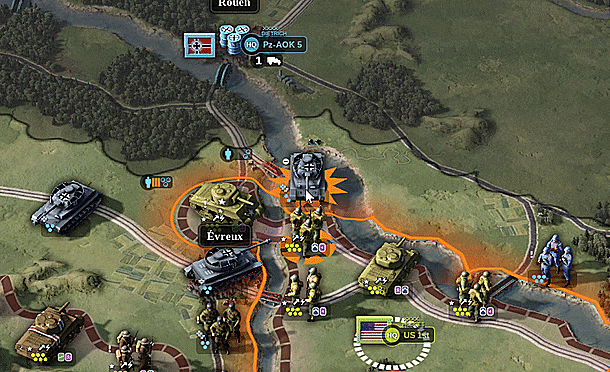
In this example, first the 30th US infantry division attacks an armor kampfgruppe. The attack is successful and the enemy unit is removed from the map. It’s not completely destroyed though, and you can see the routed troops join an existing group of stragglers in the rear. To make sure they don’t reorganize, the Sherman moves in and mops up, taking prisoners and clearing the road. This results in valuable new intel, and some enemy units are located on the map, just across the river. Turns out, the road from Paris to Rouen is swarming with enemies!
As the Sherman (actually, 5th US Armored) moves in and takes the 3-step enemy straggler as prisoners, the prisoner counter on the HQ sheet (bottom right of screen) reflects this change. The prisoner target, set by HQ intel, has been reached, which means that HQ intel can now locate enemy units one hex inside fog of war. These units are shown on the map as intel markers. You also get a notification in the bottom left of the screen, just above the quick-select HQ buttons.
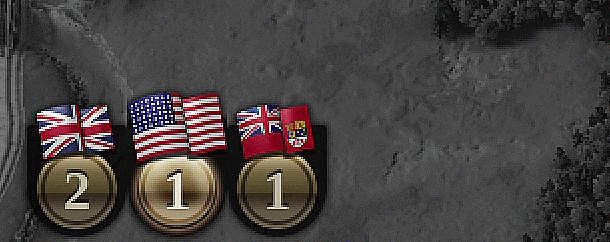
Tactical Choices
The stragglers mechanic not only prevents bloody, wipeout scenarios, and thus addresses one of the main issues from the original Unity of Command. It also gives you more tactical choices: attack head-on, encircle, or mop up routed enemy units? Gather valuable intel and prepare for the next turn, or rush forward without full knowledge of what lays ahead?
Sometimes you will have to deal with stragglers simply to keep the roads open, and be able to advance. One or two steps of enemy stragglers shouldn’t be a problem. Your units are able to capture them simply by moving over them while advancing:

On the other hand, three stragglers on the map represent 5.000 to 10.000 routed and disorganized enemy soldiers, and that’s a problem that needs to be dealt with! Moving right through them will cost at least 3 movement points. Alternatively, you can go around those stragglers, but either way sometimes that means that the prize will remain just outside your reach. Here’s that same Sherman unit, in a slightly different situation, with 3 stragglers instead of 2 on the road. Notice the choice to go around or mop up:

Branching Out
How many stragglers need to be captured to reveal enemy units in FoW? Will HQ intel only reveal units close to the frontline or further away? This is all still in active testing, and we’re tweaking some of this stuff heavily.
There are further interesting tie-ins, to other game systems, but those will have to wait for another post. As a teaser, HQ intel can be upgraded as part of the campaign game, and it becomes temporarily suppressed when the HQ is out of supply or gets routed.
We’re really trying to load this one with depth folks, and I hope you all like the final product.
Take care and AMA in comments as usual.
Cheers,
Tom
https://store.steampowered.com/app/809230/Unity_of_Command_II/
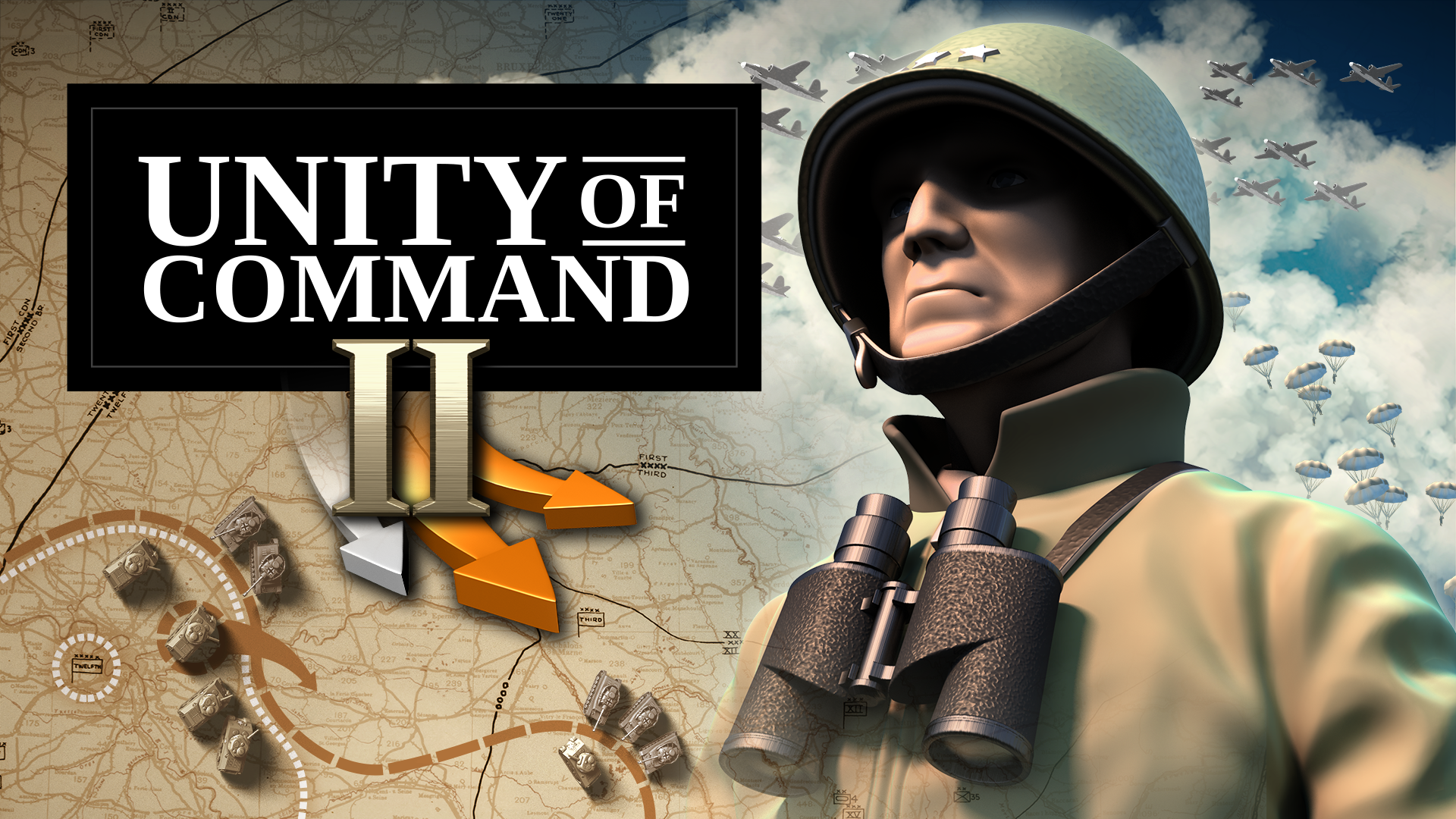
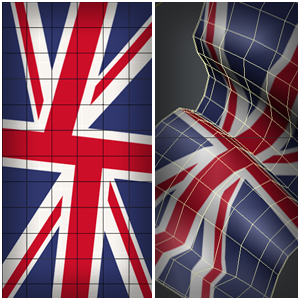


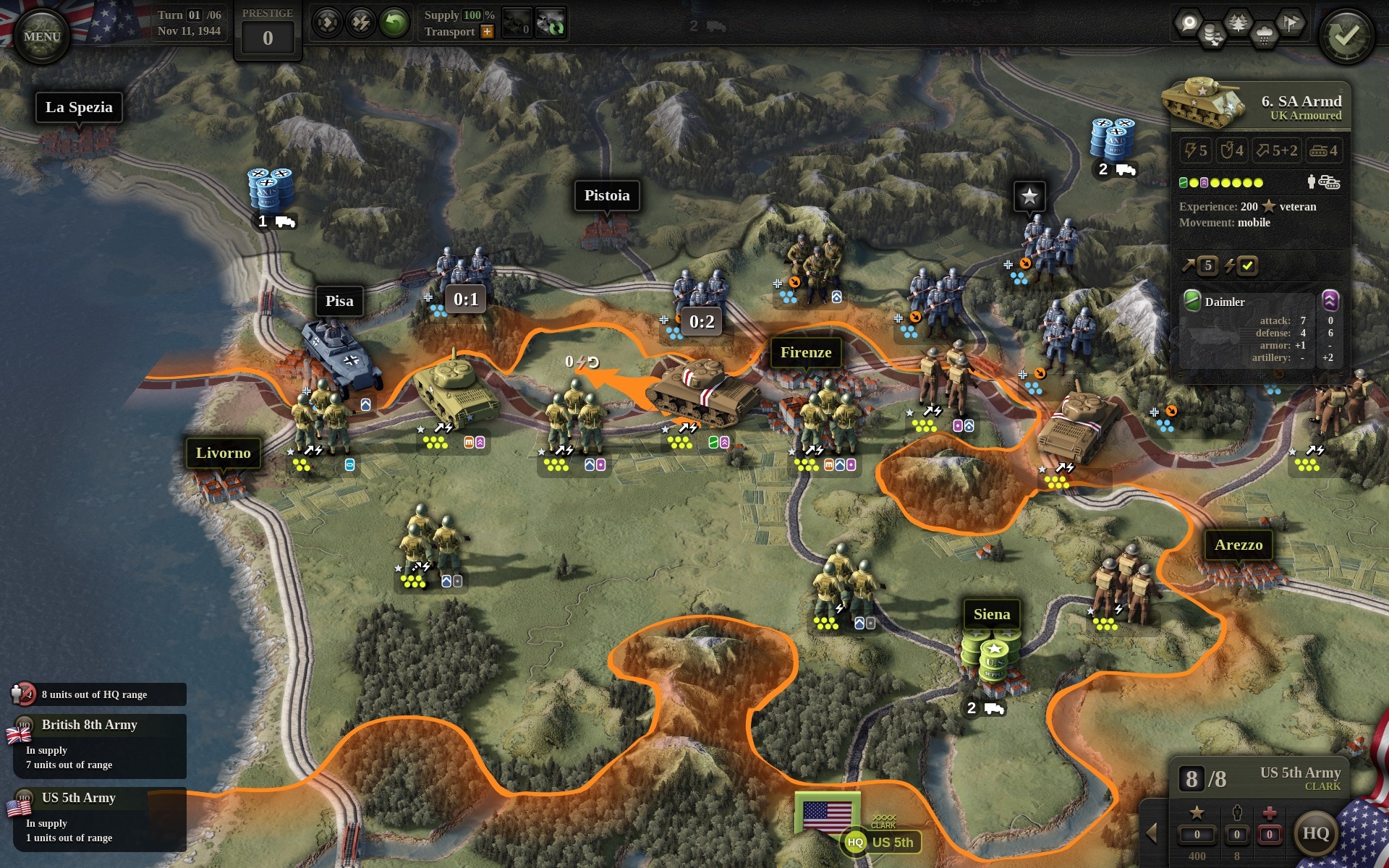 Hello and welcome to Unity of Command 2 Development Diaries!
Hello and welcome to Unity of Command 2 Development Diaries! 

























































